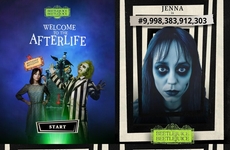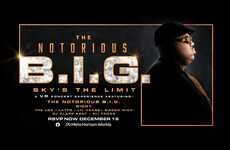
Gabriel Barcia-Colombo Lets Users Digitally Visit The Deceased
References: hereafterinstitute & thecreatorsproject.vice
Consumers can now choose to keep in touch with those that have passed on with an augmented reality experience that provides a virtual afterlife designed by Hearafter Institute and artist Gabriel Barcia-Colombo. The experience provides a way people can immerse themselves into a digital memorialization of a person that is no longer here. The project is both an art exhibit as well as an invitation to explore how loved ones that have passed can potentially be remembered in a digital format for years to come.
The exhibit explores what a virtual afterlife could be like with conceptual consultants that walk guests through three different social media options that retain the livelihood of the person. This can include bots that track the data of the person's usage prior to passing, and continues to create status updates based off of their behavior, language patterns and attributes. Though the exhibit is conceptual, it shows a way VR can be used to retain the memory of those no longer with us.
The exhibit explores what a virtual afterlife could be like with conceptual consultants that walk guests through three different social media options that retain the livelihood of the person. This can include bots that track the data of the person's usage prior to passing, and continues to create status updates based off of their behavior, language patterns and attributes. Though the exhibit is conceptual, it shows a way VR can be used to retain the memory of those no longer with us.
Trend Themes
1. Virtual Afterlife - The trend of using virtual reality to create digital memorialization of deceased loved ones and provide a virtual afterlife experience for the living is disrupting the funeral industry.
2. Data-driven Bots - The trend of using data-driven bots to create social media updates of deceased loved ones is disrupting the social media industry by introducing a new way of preserving memories and emotional connections.
3. Conceptual VR Experiences - The trend of creating conceptual VR experiences is disrupting the art and entertainment industry by introducing new possibilities for virtual reality beyond gaming and education.
Industry Implications
1. Funeral Services - Using virtual reality to create digital memorialization and provide virtual afterlife experiences is disrupting traditional funeral services and offering a new way of remembering loved ones.
2. Social Media - The use of data-driven bots to create social media updates of deceased loved ones is disrupting the social media industry by introducing a new way of preserving memories and emotional connections beyond physical lifespan.
3. Art and Entertainment - Using VR for conceptual experiences that allow people to visit a virtual afterlife experience is disrupting the art and entertainment industry and introducing new possibilities for emotional and spiritual connections beyond physical reality.
4.6
Score
Popularity
Activity
Freshness























